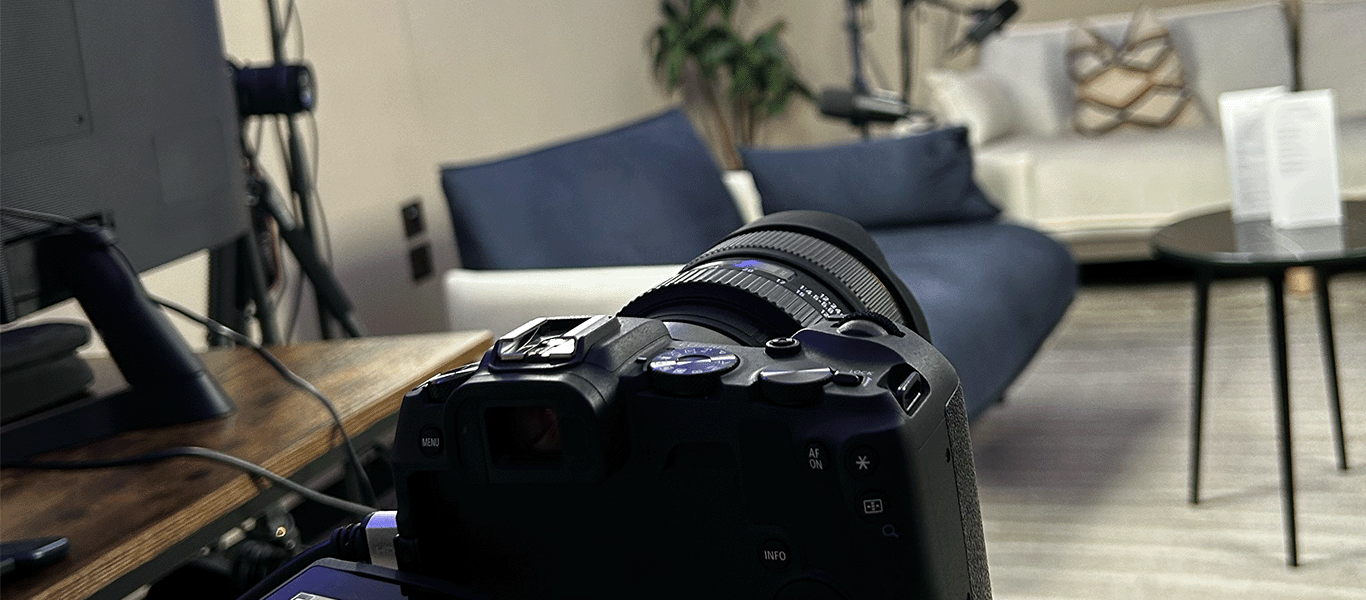
Podcasts have become a staple of the content marketing mix and have a lot to offer to help businesses create multi-purpose assets and delve into the details of important topics.
In the maritime media, several trade publications offer a podcast production service, which can be a good starting point for fledgling podcasters and can solve the hosting and distribution aspects, too.
If you’re pondering a podcast strategy, read on to find out how we approached a podcast project and our tips to help you achieve a quality production.
Why produce a podcast?
Primarily, because podcasts can be a fantastic vehicle for injecting some human energy into your marketing content. Brands tend to put a great deal of resource into written content, understandably, but there’s a reason why millions of people listen to, and watch, podcasts – because they involve people, provide insight into a niche topic and are very accessible.
As a thought leadership platform, podcasts are ideal to position an individual or company as an expert with wisdom to share. Podcasts can also be very entertaining, so offer brands an avenue to experiment with their image and to present themselves differently. They can demonstrate collaboration, by assembling a group of topic experts to discuss and comment on industry developments (check out our podcast about marketing in the Asia Pacific region, which features a group of maritime communications experts exploring the subject) and can facilitate a detailed dive into newly discovered knowledge or technology.
So, plenty of scope to compliment a brand campaign with podcasts. And, in terms of return on investment, podcasts can also be repurposed and recycled across various channels, so are well worth the effort.
Podcast process
As with all marketing planning, start with strategy. Be really clear on what you’re setting out to achieve with your podcast and where you’ll publish it to achieve those aims.
One particular podcast project that we managed at Wake Media involved working with a client to raise the profile of two key spokespeople who were keen to establish themselves in new roles. We started by exploring their individual aims and set about devising discussion outlines that aligned with their objectives, the wider company marketing strategy and industry trends.
Top tip: create a video version as well as audio, to maximise scope to publish on multiple channels.
Here’s our 8-step process for managing podcast productions, starting with a detailed brief to capture objectives, discussion points, branding elements and channels for publication, so everyone’s clear at the outset:

Podcast/video | Project components
While having an outline of the podcast conversation is essential for the host and participants, we recommend avoiding using a script, which can interrupt the flow of the podcast and lead to participants sounding less authentic. A great podcast should look and sound like a spontaneous discussion or interview, with participants who are relaxed and speaking freely.
A rehearsal in advance is a good idea, too, after which a bulleted list of the discussion topics should be perfectly adequate to keep the podcast on track. Any tongue-twisty moments can be edited out in post-production, after all.
Tip: When briefing your host and participants, suggest that they leave a short pause after speaking, to allow the audience to digest their comments and to avoid any overlaps in dialogue.
Production value
A good host is essential, so select someone with flair and who fits the topic. The host doesn’t have to be a podcast pro, they just need to have a voice that carries well and to be adept at interviewing or moderating. It could help to recruit a host who’s a topic expert, too, and who knows how to keep your participants, and your audience, engaged. For our project, we chose a maritime journalist and former mariner to strike the right note with the audience.
To record a podcast, a studio is ideal as you’ll have a soundproofed room, high quality mics and mixing equipment and cameras for a video version. We opted for a studio in East London, conveniently located near our client’s HQ and staffed by skilled & friendly technicians. Check them out here: The Qube.
Tip: take an SSD (solid state drive) for speedy transfer of your podcast files.
If it’s not possible to get your podcast participants to a single location, there are numerous online platforms to facilitate a remote recording session, such as Streamyard.
One of the advantages of producing your own podcast is that you have complete control over the edit. That means that mistakes can be erased, giving businesses complete confidence that the podcast production is risk-free.
Consider your branding elements in advance, such as musical ‘stings’ and bumpers, to minimise the time needed for post-production and approvals. You’ll also need a podcast thumbnail image to use when you publish.
If you decide to tackle the post-production work yourself, we recommend focusing on these 5 key areas:
- Reviewing and sorting the audio: Including removing background noises and any mistakes, putting all the files into the editing software to organise, and put into the correct sequence. You may need to edit the audio and use noise reduction techniques to enhance the overall sound quality.
- Trimming and cutting: Once the audio is cleaned up, remove any pauses (ums, ahs or any other hesitations) while maintaining a natural conversation, so the flow and pace are correct. This is done by making precise cuts within the software throughout the recording.
- Enhancements: To make the listen more engaging, you can add music, stings, or sound effects to create atmosphere or emotion. Editing tip: don’t overdo such effects, as they can be distracting!
- Structuring and sequencing: This is when you put the podcast cuttings into a logical sequence, which may involve rearranging sections and adding transitions.
- Quality control: Check for sudden jumps, technical issues, or errors in the audio, including glitches or anything that may affect the flow of the podcast.
Publishing your podcast
It’s best to upload your podcast to a hosting service, such as Acast. From there, you can publish the podcast on streaming services, like SoundCloud, as well as your website, YouTube and social media channels. Short teaser video clips can work really well on LinkedIn to create interest and encourage views and listens, so your podcast reaches your target audience and beyond.
If you have a question about creating a podcast, just get in touch below.
👉 To be alerted to future articles such as this please subscribe here.
